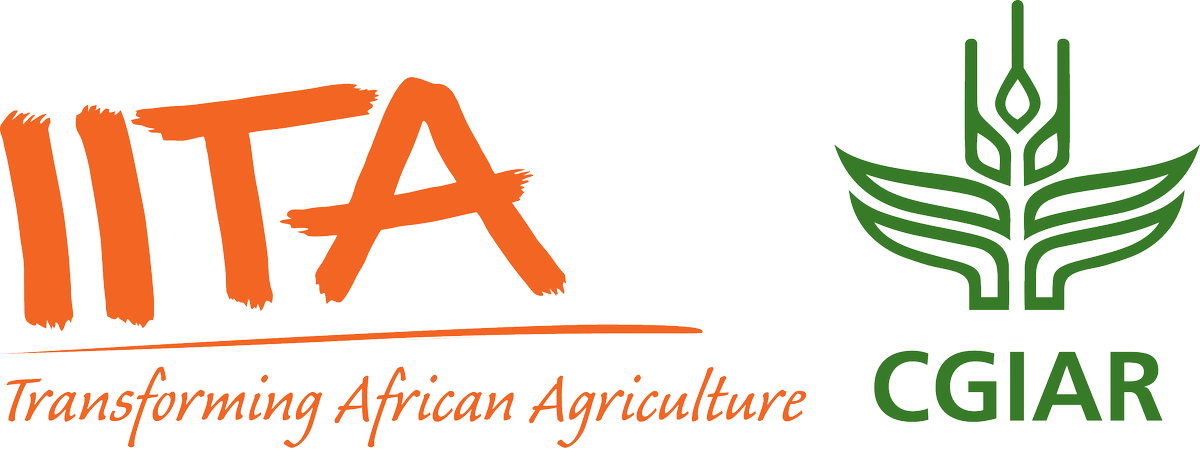Population dynamics of banana aphid
Citation
Data and Resources
-
Alate banana aphids in traps and on plantscsv
Alate banana aphids in traps and on plants
-
All aphid and associated ants and predators datacsv
All aphid and associated ants and predators data
-
Weather variables -temp and RH means and max ...csv
Weather variables -temp and RH means and max and mins and total monthly rainfall
-
Data_Dictionary_alates in trapscsv
Data_Dictionary_alates in traps
-
Data_Dictionary_All counts on plantscsv
Data_Dictionary_All counts on plants
-
Data_Dictionary_weater variablescsv
Data_Dictionary_weater variables
Additional Info
| Field | Value |
|---|---|
| Creator | Ngatat, Sergine |
| Creator Affiliation | International Institute of Tropical Agriculture (IITA) |
| Creator email | S.Ngatat@cgiar.org |
| Creator ID Type | ORCID |
| Creator ID | 0000-0002-5786-3865 |
| Subject Vocab (AGROVOC/GACS/CAB) | Pentalonia nigronervosa,Ants,Path analysis |
| Subject(s) | Predatory arthropods,Contingency tables |
| Publisher | International Institute of Tropical Agriculture (IITA) |
| Contributor Person 1 | Rachid Hanna |
| Contributor Person 1 Affiliation | International Institute of Tropical Agriculture (IITA) |
| Contributor Person 1 email | r.hanna@cgiar.org |
| Contributor Person 2 | Lava Kumar |
| Contributor Person 2 Affiliation | International Institute of Tropical Agriculture (IITA) |
| Contributor Person 2 email | l.kumar@cgiar.org |
| Contributor Person 3 | Komi Kouma Mokpokpo Fiaboe |
| Contributor Person 3 Affiliation | International Institute of Tropical Agriculture (IITA) |
| Contributor Person 3 email | K.Fiaboe@cgiar.org |
| Contributor Person 4 | Apollin Fotso Kuate |
| Contributor Person 4 Affiliation | International Institute of Tropical Agriculture (IITA) |
| Contributor Person 4 email | A.Fotso@cgiar.org |
| Contributor Person 5 | Richard T. Ghogomu |
| Contributor Person 5 Affiliation | |
| Contributor Person 5 email | |
| Contributor Person 6 | Edwige S. Djomaha |
| Contributor Person 6 Affiliation | |
| Contributor Person 6 email | |
| Contributor Person 7 | |
| Contributor Person 7 Affiliation | |
| Contributor Person 7 email | |
| Contributor Person 8 | |
| Contributor Person 8 Affiliation | |
| Contributor Person 8 email | |
| Contributor Person 9 | |
| Contributor Person 9 Affiliation | |
| Contributor Person 9 email | |
| Contributor Person 10 | |
| Contributor Person 10 Affiliation | |
| Contributor Person 10 email | |
| Contributor Person 11 | |
| Contributor Person 11 Affiliation | |
| Contributor Person 11 email | |
| Contributor Person 12 | |
| Contributor Person 12 Affiliation | |
| Contributor Person 12 email | |
| Contributor Person 13 | |
| Contributor Person 13 Affiliation | |
| Contributor Person 13 email | |
| Contributor Person 14 | |
| Contributor Person 14 Affiliation | |
| Contributor Person 14 email | |
| Contributor Person 15 | |
| Contributor Person 15 Affiliation | |
| Contributor Person 15 email | |
| Contributor Person 16 | |
| Contributor Person 16 Affiliation | |
| Contributor Person 16 email | |
| Contributor Person 17 | |
| Contributor Person 17 Affiliation | |
| Contributor Person 17 email | |
| Contributor Person 18 | |
| Contributor Person 18 Affiliation | |
| Contributor Person 18 email | |
| Contributor Person 19 | |
| Contributor Person 19 Affiliation | |
| Contributor Person 19 email | |
| Contributor Project Lead Organisation Center | International Institute of Tropical Agriculture (IITA) |
| Contributor Project Lead Center | |
| Contributor Initiative/CRP | CGIAR Research Program on Roots, Tubers and Banana(RTB) |
| Contributor Partner | Not applicable |
| Contributor Donor | CGIAR program Roots, Tubers and Banana; the United Nations University On-the Job Training and Capacity Building grant |
| Contributor Project | Banana bunchy top disease control-RTB |
| Project ID | |
| Contributor Affiliation | International Institute of Tropical Agriculture (IITA) |
| Open-Access status | Open Access |
| Production Date | 2013-12-19 |
| Embargo End Date | |
| Content Type | Dataset |
| File Format | csv |
| Identifier Type | DOI |
| Identifier | https://doi.org/10.25502/6jfe-7n42/d |
| Identifier Citation | |
| Source | Banana bunchy top disease control-RTB |
| Language | English |
| Relation | Not applicable |
| Agroecological Zone | Humid warm tropics |
| Coverage Region | Central Africa |
| Coverage country | Cameroon |
| Coverage Admin Unit | Not applicable |
| Coverage Y (Latitude) | 3.863233 |
| Coverage X (Longitude) | 11.4619 |
| Coverage Start Date | 2010-06-23 |
| Coverage End Date | 2013-12-18 |
| Contact | Ngatat, Sergine; International Institute of Tropical Agriculture (IITA) |
| Contact Email | s.ngatat@cgiar.org |
| Restriction | CC-BY 4.0 |
| Email Permission | None |
| Rights | CC-BY 4.0 |
